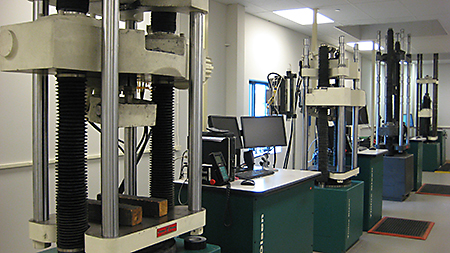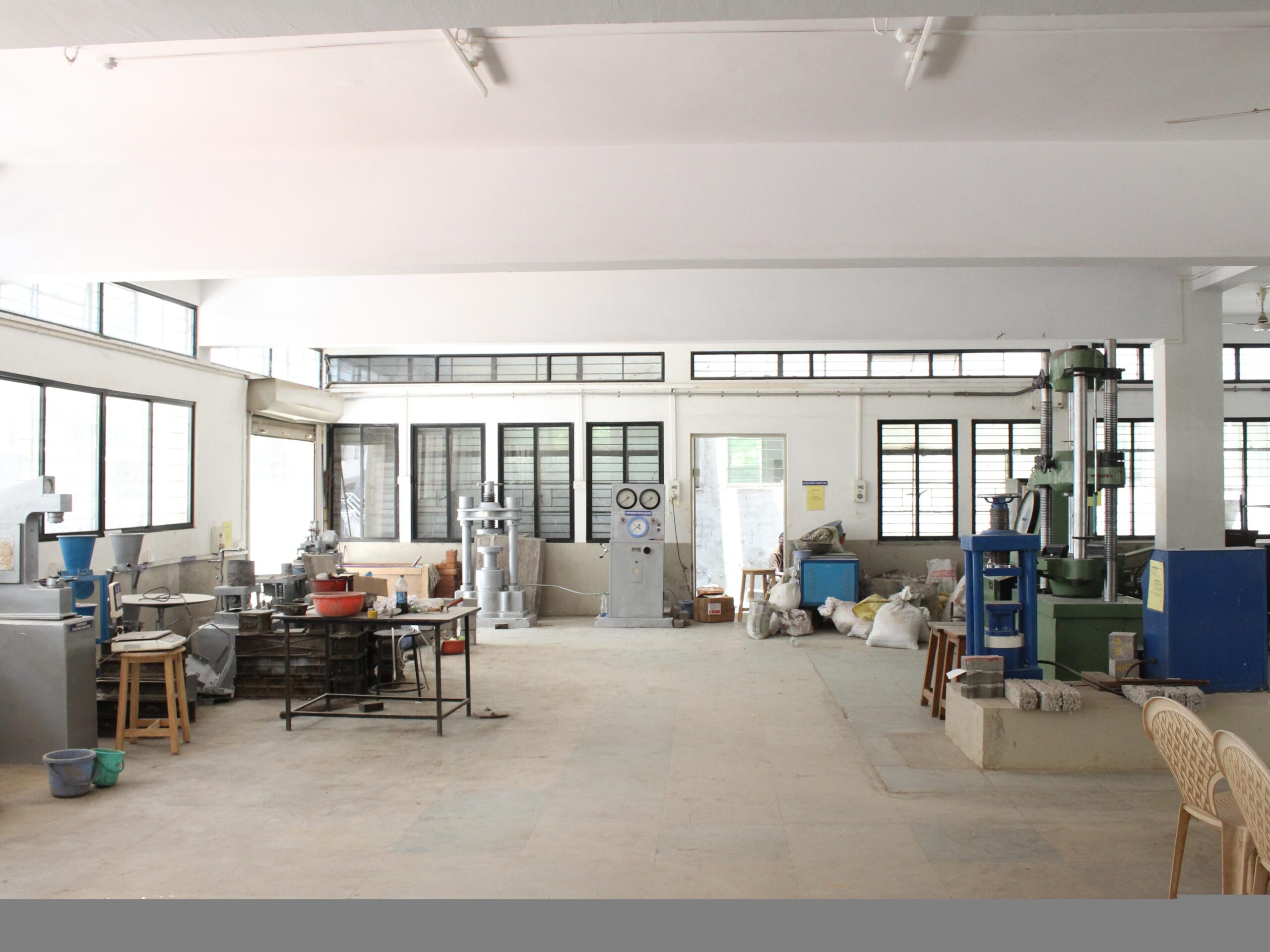Improvements in Product Testing for Unprecedented Performance
This brings us to the appealing world of developments in product screening, where innovative approaches and cutting-edge techniques are transforming the means we maximize and understand product performance. Let us embark on this trip of exploration, as we discover the impressive developments in material testing and their possible to shape the future of different sectors.
Non-Destructive Examining Techniques
Non-destructive screening strategies are vital for reviewing the integrity and dependability of products without causing any type of damages. These strategies play a crucial duty in numerous industries, including aerospace, automotive, building, and manufacturing. By making use of non-destructive screening approaches, designers can assess the residential or commercial properties and features of materials, making certain that they fulfill the called for criteria and specs.

Another commonly made use of technique is magnetic particle testing (MT), which is largely used for identifying surface and near-surface problems in ferromagnetic products. By using an electromagnetic field to the material and afterwards presenting magnetic particles, any problems provide can be conveniently identified. MT is particularly efficient for finding splits, lack of blend, and various other surface area abnormalities.
Advanced Materials Characterization Techniques
Advanced products characterization methods are important tools for examining the residential or commercial properties and performance of products in numerous sectors. These methods entail the usage of sophisticated methods to recognize the microstructure and analyze, composition, and behavior of materials at the atomic and molecular levels. By employing advanced characterization techniques, researchers and engineers can get important insights right into the architectural stability, mechanical residential properties, thermal stability, and chemical reactivity of products.
One extensively utilized method is scanning electron microscopy (SEM), which supplies high-resolution images of a material's surface. One more crucial method is X-ray diffraction (XRD), which offers details regarding the crystal structure and stage structure of materials.
Additionally, transmission electron microscopy (TEM) allows researchers to observe the internal framework of products with atomic resolution. TEM can disclosing details such as grain limits, problems, and dislocations, offering crucial info about a product's mechanical residential or commercial properties - material testing lab. In addition, spectroscopic strategies like Fourier-transform infrared spectroscopy (FTIR) and Raman spectroscopy can be used to examine the chemical composition, molecular structure, and vibrational settings of materials
High-Temperature and Extreme Setting Screening
In order to review the performance of products in high-temperature and extreme settings, rigorous testing techniques are needed. These testing methods are developed to imitate the conditions that materials might run into in real-life applications, such as aerospace, automotive, and energy markets. Severe and high-temperature setting screening intends to assess the behavior of materials under extreme heat, pressure, and other tough conditions.
One typically utilized method for high-temperature screening is thermal evaluation. This approach includes subjecting the material to differing temperatures while measuring its thermal residential properties, such as thermal growth, warmth ability, and thermal conductivity. By assessing these buildings, scientists can establish how the material will certainly act under different temperature level problems, enabling them to select the most ideal products for particular applications.
Another vital facet of high-temperature and extreme setting testing is mechanical screening. This includes subjecting the material to mechanical stress and anxiety at raised temperatures, imitating the conditions it may experience in real-world applications. Mechanical screening helps review the material's resistance, ductility, and strength to contortion and failure under high-temperature and severe problems.
Additionally, ecological testing is critical to examine the product's performance in rough conditions, such as harsh atmospheres or direct exposure to extreme climate condition. This screening entails subjecting the material to numerous environmental aspects, such as humidity, salt spray, you can find out more and UV radiation, to examine its resilience and resistance to corrosion and destruction.

Simulation and Modeling for Material Efficiency
Simulation and modeling play an essential duty in understanding and predicting the efficiency of products in various applications. With innovations in computational capabilities, designers and researchers can now design the actions and imitate of materials under various conditions, giving beneficial insights into their efficiency and assisting in the advancement of brand-new materials with improved residential properties.
Through simulation and modeling, scientists can study the microscopic and macroscopic behavior of products, including their mechanical, thermal, and electrical buildings. This allows them to anticipate how products will behave under various lots, temperatures, and environmental problems, without the requirement for taxing and pricey experimental screening.
Simulation and modeling strategies also allow scientists to optimize product layouts and identify possible weaknesses or failure factors. By researching the product's response to different forces and stimuli, engineers can make enlightened decisions regarding material option and style alterations to enhance efficiency and toughness.
Furthermore, simulation and modeling can assist in the advancement of products for particular applications. For example, in the aerospace market, researchers can simulate the actions of products under severe temperatures and pressures to develop light-weight yet solid materials for aircraft frameworks (material testing lab). In the clinical field, simulation techniques can be used to research the communications between products and biological tissues, bring about the top article advancement of biocompatible materials for implants or medicine shipment systems
Integration of Artificial Intelligence in Product Screening
The unification of Expert system (AI) right into material testing has transformed the field, allowing researchers to accomplish unmatched precision and efficiency in evaluating product efficiency. AI algorithms can refine and assess large amounts of information, determining patterns and correlations that might not be quickly evident to human researchers. This permits more thorough and exact testing, leading to a much deeper understanding of material habits.
One application of AI in product testing remains in the growth of anticipating designs. By educating AI formulas on huge datasets of material properties and performance, researchers can develop designs that can properly anticipate the habits of new products under different conditions. This can significantly speed up the product advancement process, as it allows scientists to screen and prioritize products with preferred properties.
In addition to predictive modeling, AI can likewise be made use of to optimize screening treatments. By evaluating historic screening information, AI formulas can recognize the most helpful and effective tests to do, reducing the time and sources needed for product assessment.
In addition, AI can assist in the identification of abnormalities or issues in products. By comparing test results versus expected outcomes, AI algorithms can find deviations and alert researchers to prospective problems. This can aid boost quality assurance procedures and ensure making use of products that fulfill the called for specifications.
Conclusion

By assessing these properties, scientists can figure out exactly how the material will act under various temperature level problems, enabling them to select the most suitable products for certain applications.
The consolidation of Artificial Intelligence (AI) into product screening has actually transformed the field, making it possible for scientists to accomplish unmatched accuracy and performance in examining material efficiency.In final thought, developments in product screening techniques, characterization techniques, high-temperature and extreme atmosphere testing, and the assimilation of man-made intelligence have actually significantly added to the growth of unmatched efficiency in materials. These advancements have allowed for the recognition of product residential or commercial properties and actions, allowing hop over to here the layout and optimization of products for various applications. material testing lab. With additional research and technological innovations, material screening will continue to play an essential function in pressing the boundaries of material efficiency